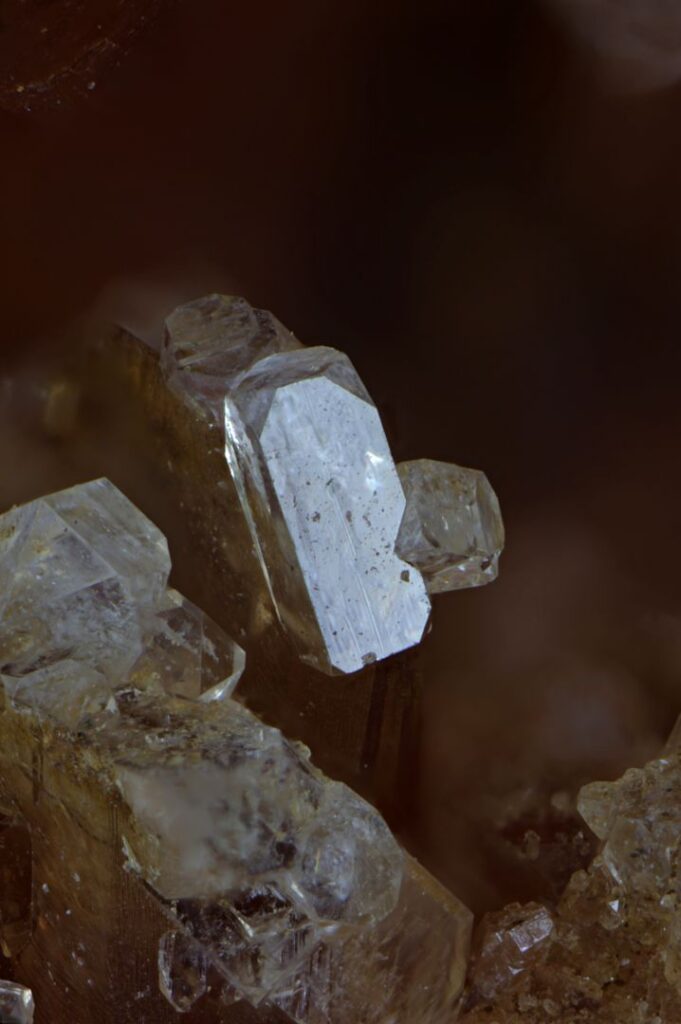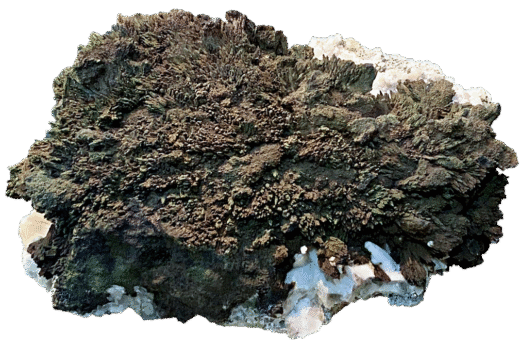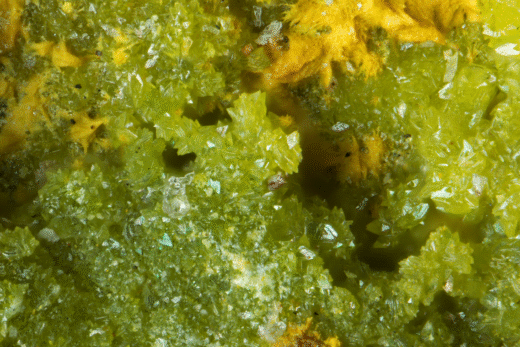KCa4Si8O20F·8H2O (Formula is for fluorapophyllite-(K). Replace K with Cs, Na or (NH4) for fluorapophyllite-(Cs), fluorapophyllite-(Na) and fluorapophyllite-(NH4) respectively, and F with OH for hydroxyapophyllite-(K)).
Apophyllite is the generic term given to unidentified members of the apophyllite group. It is not always possible to visually distinguish which species is present, however fluorapophyllite-(K) is the most common.
Apophyllite mostly occurs in basalt amygdules, but also occurs in other environments such as the Broken Hill orebody, or associated with serpentines.
Selected Australian Occurrences:
- As blocky bipyramidal colourless crystals (probably fluorapophyllite-(K)) with galena or inesite at Broken Hill, New South Wales.
- As hydroxyapophyllite-(K) from Ardglen, New South Wales.
- As hydroxyapophyllite-(K) from Ridgley, Tasmania.
- As hydroxyapophyllite-(K) from Ardglen, New South Wales.
- As fluorapophyllite-(K) from the Avebury Mine, Zeehan, Tasmania.
- As fluorapophyllite-(K) with natrolite, phillipsite and calcite at the Harkaway Quarry, Victoria.



